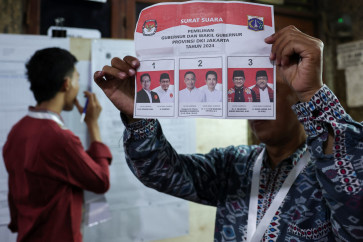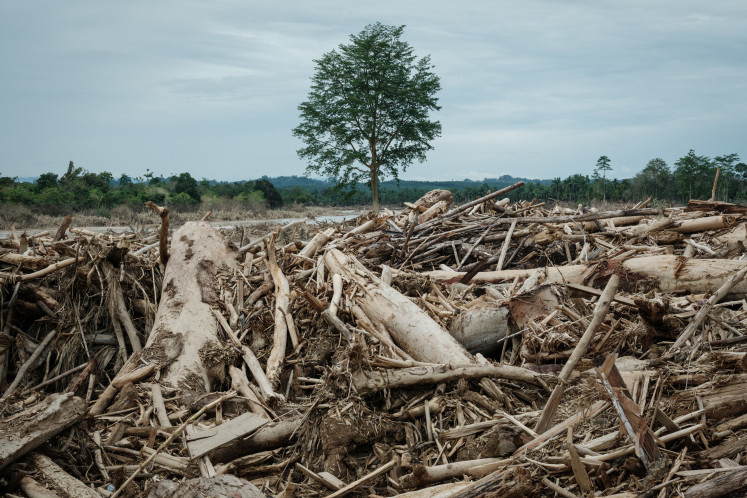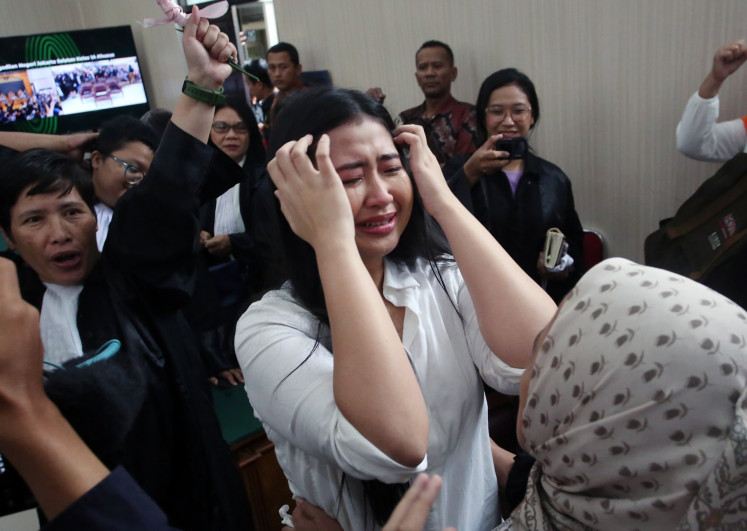Popular Reads
Top Results
Can't find what you're looking for?
View all search resultsPopular Reads
Top Results
Can't find what you're looking for?
View all search resultsHow to Build a Winning Fast Moving Consumer Goods Brand in Indonesia
The Indonesian consumer goods business is a large and growing sector that offers enormous opportunities and challenges for both local and multinational companiesz.
Change text size
Gift Premium Articles
to Anyone
T
he Indonesian consumer goods business is a large and growing sector that offers enormous opportunities and challenges for both local and multinational companiesz. According to Statista, the fast-moving consumer goods (FMCG) industry is one of the major industries in Indonesia, contributing significantly to the country’s economic development. The FMCG market value in Indonesia was estimated at about 1.2 trillion U.S. dollars in 2020, and is expected to grow at a compound annual growth rate (CAGR) of 7.6 percent from 2021 to 2025.
Fast moving consumer goods (FMCG) are products that are sold quickly and at a relatively low cost, such as food, beverages, personal care, household cleaning, and tobacco. FMCG brands face intense competition in the market, as well as changing consumer preferences and behaviours. Therefore, building a winning FMCG brand requires a clear understanding of the target market, a strong value proposition, a distinctive identity, and a consistent execution. In this article, I take the liberty to share my thoughts on how to build a winning FMCG brand in Indonesia, using some examples from Kapal Api, Sweety Baby Diaper, Sampoerna A Mild, and Mie Sedap. These are four successful FMCG brands that have established their presence and loyalty among Indonesian consumers.
Some of the key factors that drive the growth of the FMCG industry in Indonesia are:
- The rising purchasing power of consumers due to the increase in personal income, urbanization, and digitalization that shift people’s lifestyles and preferences.
- The large and diverse population of Indonesia, which consists of more than 250 million people spread across more than 6,000 inhabited islands, creating a high demand for various products and services.
- The low penetration of some product categories, such as personal care, household cleaning, and packaged food, which offer room for expansion and innovation.
- The increasing awareness and preference for health, wellness, sustainability, and social responsibility among consumers, which influence their purchase decisions and loyalty.
Some of the key challenges that face the FMCG industry in Indonesia are:
- The intense competition in the market, both from established players and new entrants, especially in the online channel.
- The complex and evolving distribution channels, which include modern trade (such as convenience stores, supermarkets, and hypermarkets), traditional trade (such as small independent stores), e-commerce, direct selling, and social commerce.
- The geographic and logistical difficulties in reaching and serving the dispersed and diverse consumers across the archipelago.
- The regulatory and political uncertainties that may affect the business environment and consumer confidence.
To succeed in the Indonesian consumer goods business, companies need to adopt best practices in four areas: sales strategy, route to market (RTM), marketing mix, and organization capability. Some examples of successful FMCG brands in Indonesia are Kapal Api (coffee), Sweety Baby Diaper (diaper), Sampoerna A Mild (cigarette), and Mie Sedaap (instant noodle), which have established their presence and loyalty among Indonesian consumers by understanding their needs, creating strong value propositions, developing distinctive identities, and executing consistently
Indonesian consumers.
1. Understand the target market
The first step to building a winning FMCG brand is to understand the target market, including their needs, wants, preferences, motivations, and behaviors. This can be done by conducting market research, such as surveys, interviews, focus groups, observations, and experiments. The goal is to identify the market segments that have the highest potential and demand for the product, as well as the unique value proposition that can differentiate the brand from the competitors.
For example, Kapal Api is a coffee brand that was founded in 1927 by Go Soe Loet, a Chinese immigrant who observed that Indonesians liked to drink coffee. He started by selling coffee beans at Tanjung Perak port in Surabaya, and later developed his own blend of coffee and clove. Kapal Api understood the target market of coffee drinkers who wanted a strong and aromatic flavour, as well as an affordable price. Kapal Api also adapted to the changing market trends by launching various product variants, such as instant coffee, sachet coffee, and premium coffee.
2. Create a strong value proposition
The second step to building a winning FMCG brand is to create a strong value proposition that communicates the benefits and advantages of the product to the target market. The value proposition should answer the question: why should consumers choose this brand over others? The value proposition should be clear, concise, relevant, and compelling.
For example, Sweety Baby Diaper is a diaper brand that was launched in 2003 by Softex Indonesia. Sweety Baby Diaper created a strong value proposition by claiming to be the only diaper brand in Indonesia that has been clinically tested by Australian Dermatest Center as hypoallergenic and safe for baby’s skin. Sweety Baby Diaper also offered various product features that catered to the needs of parents and babies, such as softness, breathability, absorbency, fit, and design.
3. Develop a distinctive identity
The third step to building a winning FMCG brand is to develop a distinctive identity that reflects the personality and image of the brand. The identity includes the name, logo, slogan, color scheme, packaging design, and other visual elements that make the brand recognizable and memorable. The identity should be consistent across all touchpoints and channels of communication with the consumers.
For example, Sampoerna A Mild is a cigarette brand that was launched in 1988 by PT HM Sampoerna Tbk. Sampoerna A Mild developed a distinctive identity by using white as the dominant color for its packaging and logo. White symbolizes purity, freshness, and modernity. Sampoerna A Mild also used red as an accent color to represent passion, energy, and confidence. Sampoerna A Mild also adopted the slogan “how low can you go” Clearly positioning it as the ‘healtier’ and modern alternative to the old clove cigarettes) by emphasizing its mild flavour and quality.
4. Execute consistently
The fourth step to building a winning FMCG brand is to execute consistently on delivering the value proposition and identity to the target market. This involves ensuring product quality and availability, managing distribution channels and pricing strategies, creating effective marketing campaigns and promotions, engaging with consumers through social media and customer service, and measuring performance and feedback.
For example, Mie Sedaap is an instant noodle brand that was launched in 2003 by Wings Food. Mie Sedaap executed consistently on delivering its value proposition of being delicious and satisfying by using natural spices and ingredients, adding extra toppings such as fried onion and koya powder (dried shrimp paste), and offering various flavors such as fried noodle, soto (soup), curry chicken (soup), spicy chicken (soup), spicy laksa (soup). Mie Sedaap also executed consistently on its identity by using yellow as its main color for its packaging design, logo, and marketing materials. Yellow symbolizes happiness, warmth, and appetite. Mie Sedaap also used catchy jingles and celebrities to promote its products and increase its brand awareness and recall.
In closing I surmise that building a winning FMCG brand in Indonesia requires understanding the target market, creating a strong value proposition, developing a distinctive identity, and executing consistently. By following these steps, FMCG brands can create a loyal customer base, a competitive edge, and a sustainable growth












